Brazil is the 5th largest country in the world. Because of its vast size and mix of native and immigrant populations, Brazilian food can vary greatly from state to state. But as diverse as Brazilian cuisine can be, one thing remains the same no matter where you are in the country – the Brazilian love for dessert.
If you have a sweet tooth, then we hope this article on traditional Brazilian desserts gives you much to look forward to on your next visit to Brazil.
Save This on Pinterest!
No time to read this article on Brazilian desserts? Click on the save button and pin it for later!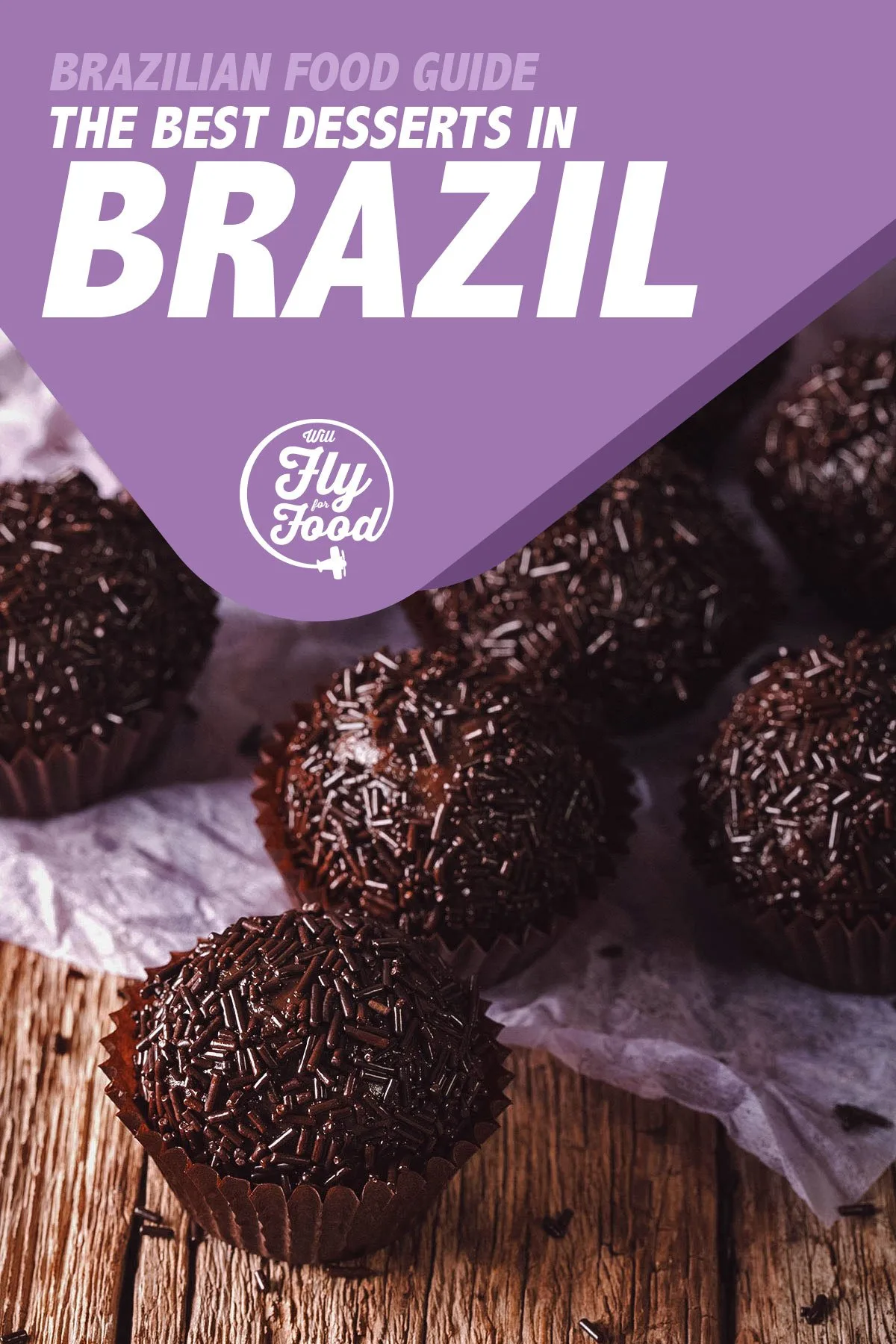
Photo by lenyvavsha
THE BEST BRAZILIAN DESSERTS
1. Brigadeiro
There’s no better way to start this article on traditional Brazilian desserts than with brigadeiro. Considered by many to be a Brazilian national dessert, it’s a common sight at children’s birthday parties in Brazil and is something that many locals grew up eating.
Brigadeiros are Brazilian fudge balls made with sweetened condensed milk, chocolate powder (or cocoa powder), and butter. Similar to chocolate truffles or bon-bons, they’re rolled into balls and coated in chocolate sprinkles before being served in individual paper cups.
The name brigadeiro means “brigadier” and is reference to Eduardo Gomes, a Brazilian brigadier who ran for president in 1946. In support of his campaign, a woman by the name of Heloísa Nabuco de Oliveira created this dessert and named it doce do brigadeiro (“brigadier’s sweet”). It quickly became popular throughout Brazil with the name eventually being shortened to just brigadeiro.
This popular sweet dish and birthday party treat is traditionally made with chocolate or cocoa powder, but more modern versions can be made with other ingredients as well like pistachio, white chocolate, passion fruit, and Nutella.
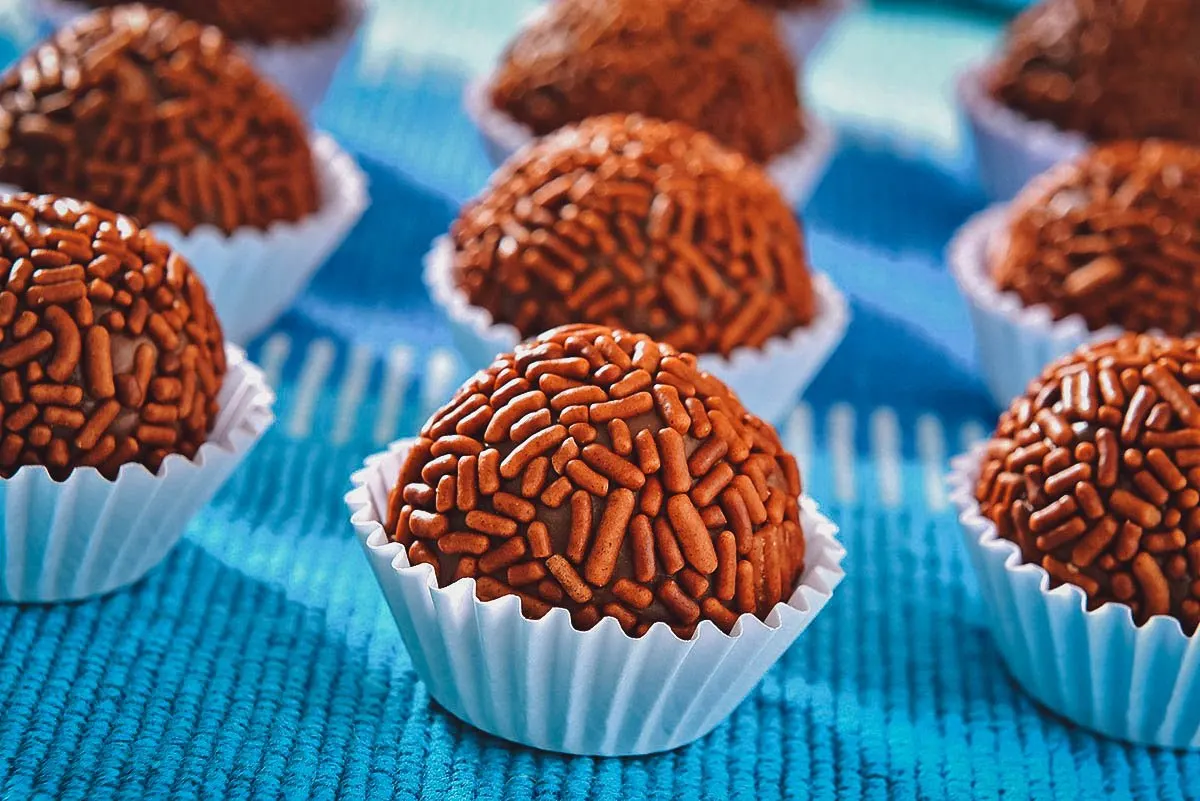
Photo by MKPK
2. Beijinho de Coco
Like brigadeiros, beijinho de coco is one of the most popular Brazilian desserts and a common sight at birthday parties in Brazil. Meaning “little coconut kiss” in Portuguese, it refers to a popular dessert made with grated coconut, condensed milk, butter, and granulated sugar. It’s essentially a coconut brigadeiro rolled in sugar or shredded coconut and topped with a single decorative clove.
Beijinhos are almost as popular as brigadeiros and can be found at nearly every birthday party in Brazil. They’re typically made with coconut but they can be made with other ingredients as well like passion fruit, cocoa powder, and strawberry gelatin. They can also be referred to as branquinhos, meaning “little white ones”.
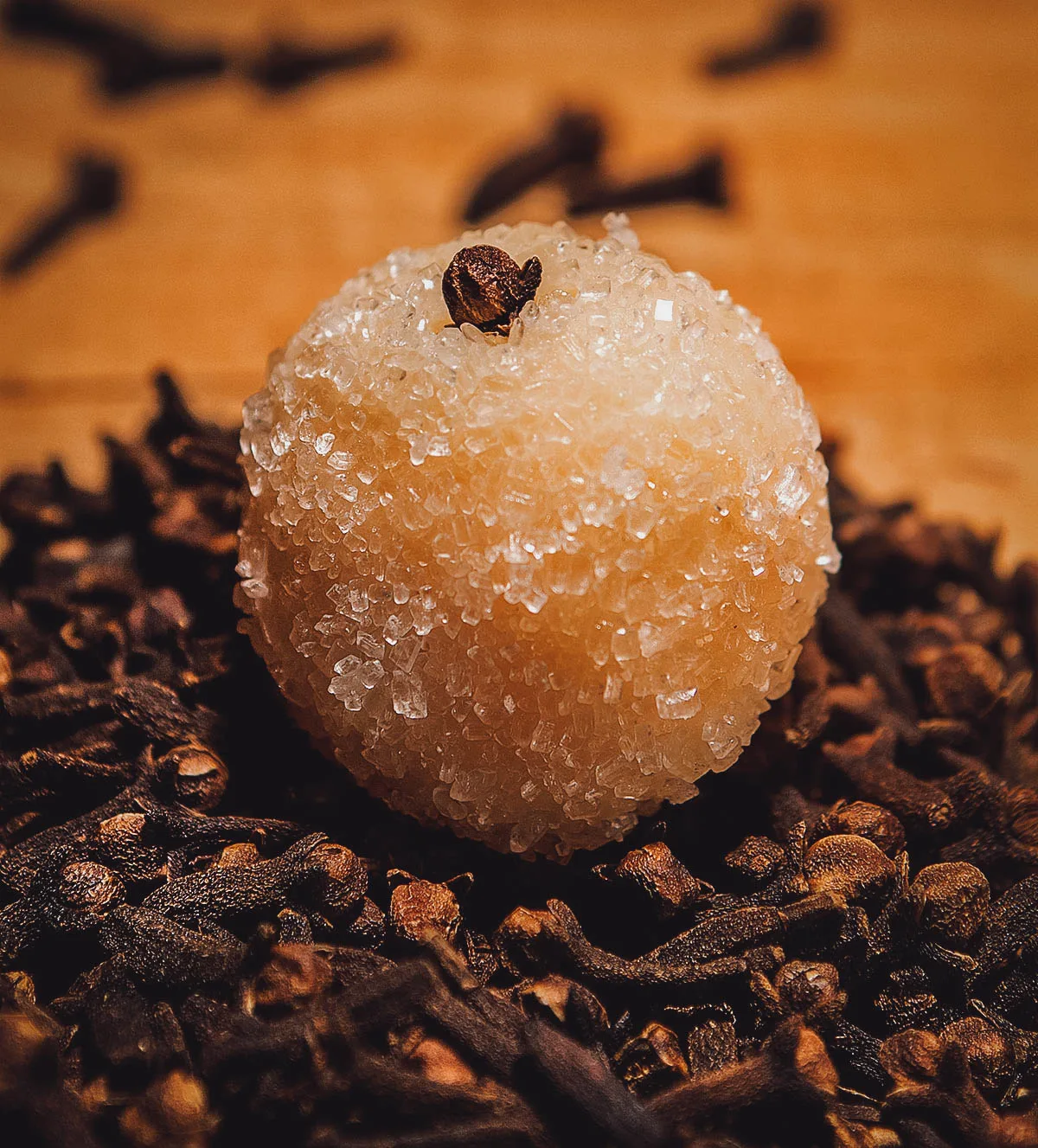
Photo by diogoppr
3. Surpresa de Uva
If beijinho de coco is a coconut brigadeiro, then you can think of surpresa de uva as a grape brigadeiro. Also known as uvinha, surpresa de uva literally means “grape surprise” and refers to brigadeiro balls made with sweetened condensed milk, butter, vanilla, green food coloring, and whole tart grapes.
Like brigadeiros and beijinhos, uvinhas are one of the most popular Brazilian desserts and a common sight at birthday parties, baby showers, weddings, and other celebratory occasions.
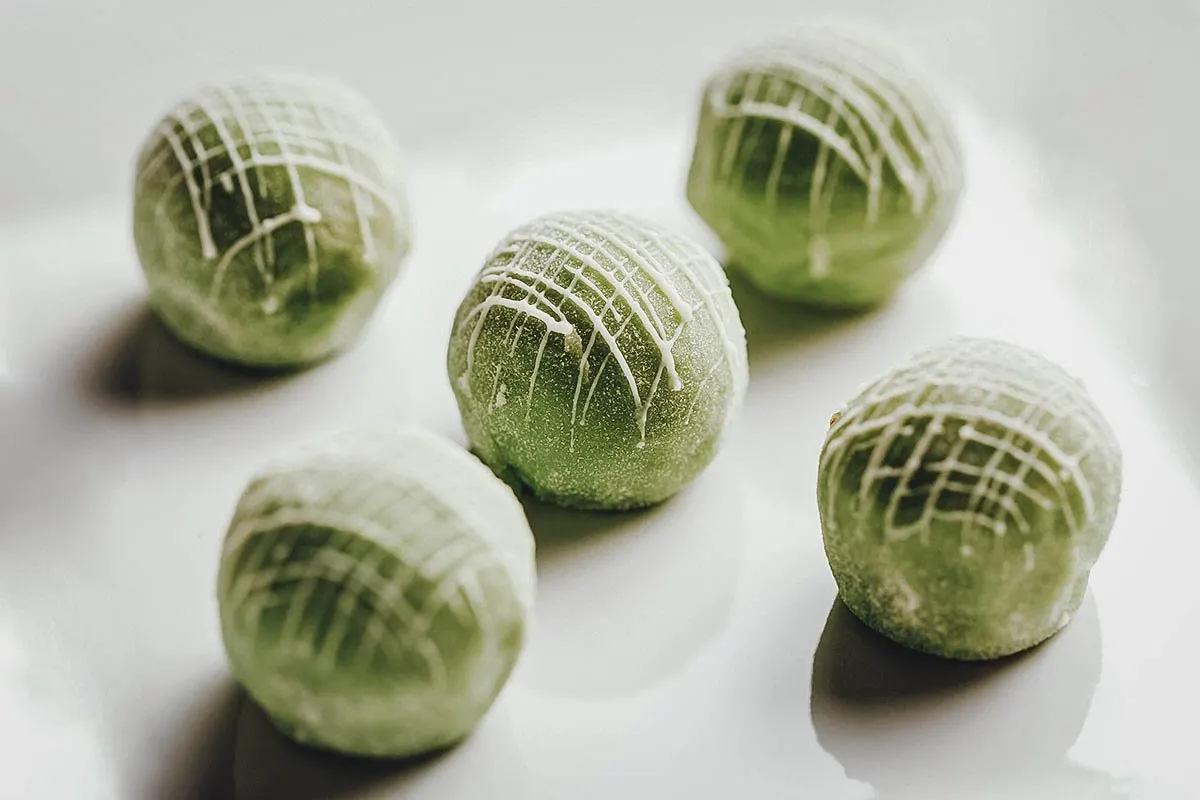
Photo by kleberpicui
4. Cajuzinho
Like the previous sweet treats, cajuzinho is one of the most popular Brazilian desserts served at children’s birthday parties. Its name literally means “little cashew” and refers to a dessert made with ground peanuts, sweetened condensed milk, cocoa powder, butter, and granulated sugar.
Cajuzinhos are commonly made with peanuts but they were traditionally made with cashews and molded into the shape of a cashew fruit, hence the name.
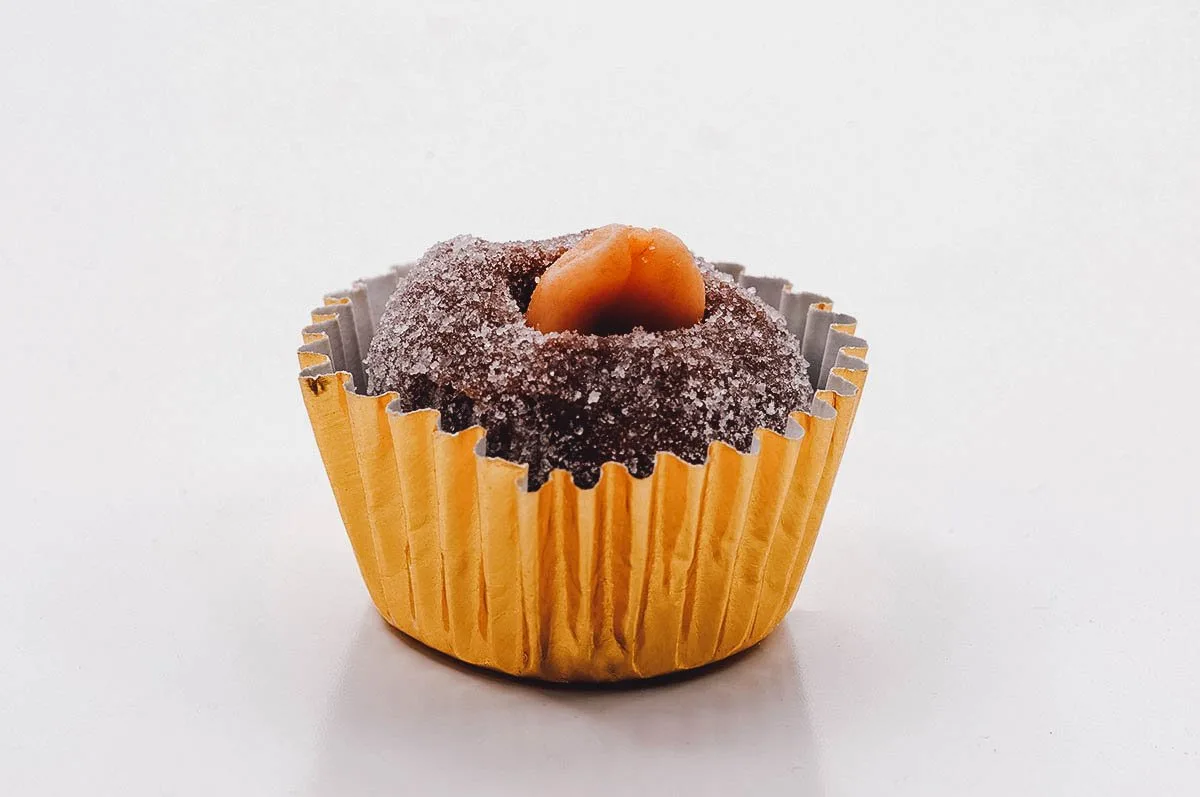
Photo by rodrigobellizzi
5. Rabanada
Who doesn’t like French toast? If you have a sweet tooth, then this delicious dish has probably graced your breakfast plate on many occasions. It’s enjoyed in many parts of the world and Brazil is no exception.
Rabanada refers to Brazilian-style French toast. Similar to Spanish torrijas, it’s originally a Portuguese dish that’s become a popular dessert in Brazil. Unlike American French toast that’s typically enjoyed for breakfast, rabanadas are usually eaten for dessert or as an afternoon snack . They’re traditionally associated with Christmas in Brazil though they’re so delicious that you’ll probably want them throughout the year.
Another key difference between rabanada and its American cousin is that it’s usually made with crusty bread. This gives it a crispier exterior and a soft, custard-like interior. The bread is soaked in sweetened condensed milk before being dipped in beaten eggs and deep-fried in oil. After frying, it’s given a nice coat of cinnamon sugar before serving.
Rabanada is such a popular Christmas treat in Brazil that a special bread called pan de rabanada is commonly sold around the holidays, just to make this dessert.
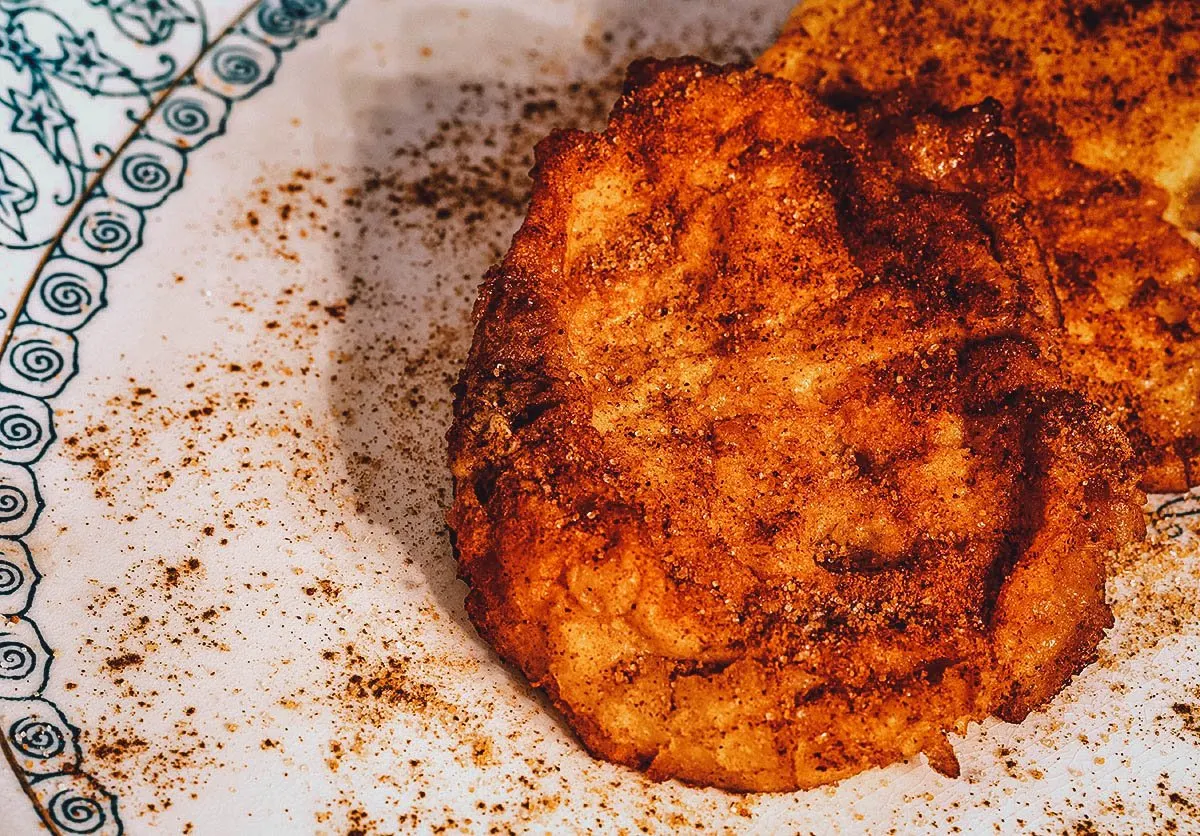
Photo by bisagraph.gmail.com
6. Açaí na Tigela
No list of popular Brazilian desserts can ever be complete without mentioning açaí na tigela. Açaí na tigela literally means “açaí in the bowl” and refers to a Brazilian dessert made with frozen and mashed acai berries.
Açaí berries are an indigenous fruit produced by the açaí palm, a species of palm tree native to Brazil and other South American countries like Ecuador, Colombia, Venezuela, and Guyana. In the west, it’s often marketed as a superfood rich in antioxidants, healthy fats, calcium, and fiber.
Açaí berries can be prepared and consumed in many ways but in Brazil, it’s commonly eaten in an acai bowl. Acai bowls are often artfully topped with various ingredients like granola, guaraná syrup, banana slices, strawberries, blueberries, and other fruits. If you’re active on social media, then pretty acai bowls are no strangers to your Instagram feed.
Açaí na tigela is consumed throughout Brazil but it’s especially popular in Rio de Janeiro, Pará, São Paolo, Goiás, Florianópolis, and along the northeastern coast. Sweet versions traditionally served cold are what many non-Brazilians think of when they think of the acai bowl, but savory versions made with cassava, fish, shrimp, or farofa are just as common in Brazil.
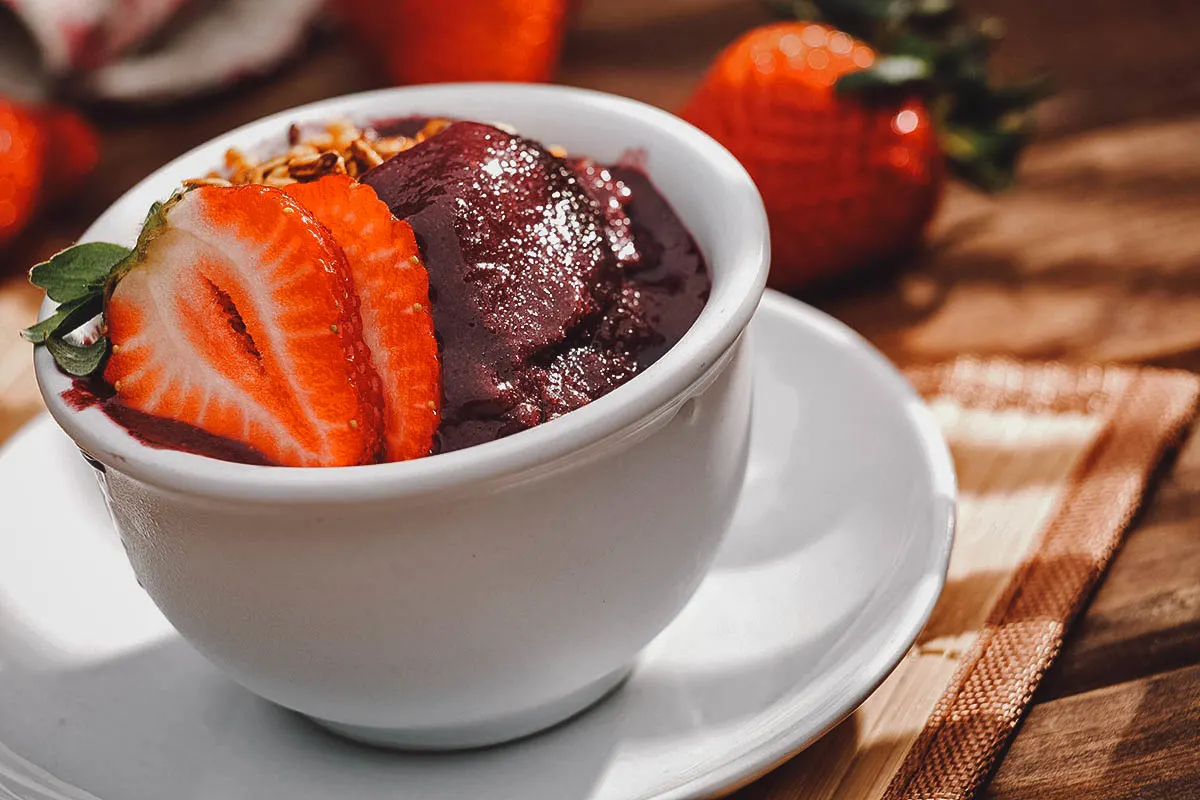
Photo by diogoppr
7. Mousse de Maracujá
Passion fruit is a common ingredient in many Brazilian desserts and mousse de maracujá or Brazilian passion fruit mousse is one of the most popular. It’s a simple dessert made with just three ingredients – condensed milk, creme de leite (Brazilian heavy cream), and frozen passion fruit juice. It can be made with additional ingredients like egg whites, whipped cream, gelatin, and sugar but at its most basic, it can be made with just those three ingredients.
Mousse de maracujá is a light and creamy tropical dessert that’s a favorite among dessert lovers in Brazil. Enjoyed for its tart and sweet taste, not only is it delicious, but it’s super easy to make!
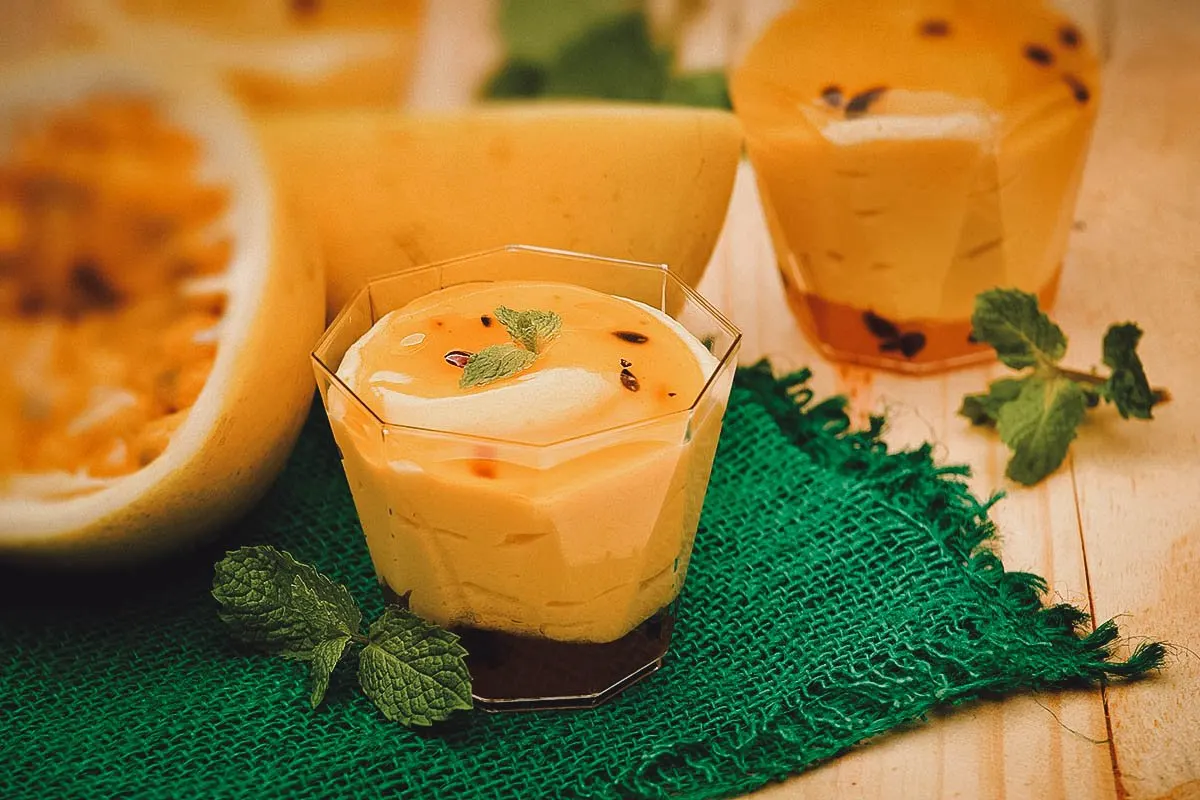
Photo by diogoppr
8. Creme de Papaya
Creme de papaya literally means “papaya cream” and refers to a simple but delicious Brazilian dessert of papaya blended with ice cream. Like mousse de maracujá, it’s a light and tropical dessert that can be made with just a handful of ingredients – fresh papaya, vanilla ice cream, condensed milk, and crème de cassis (blackcurrant liqueur).
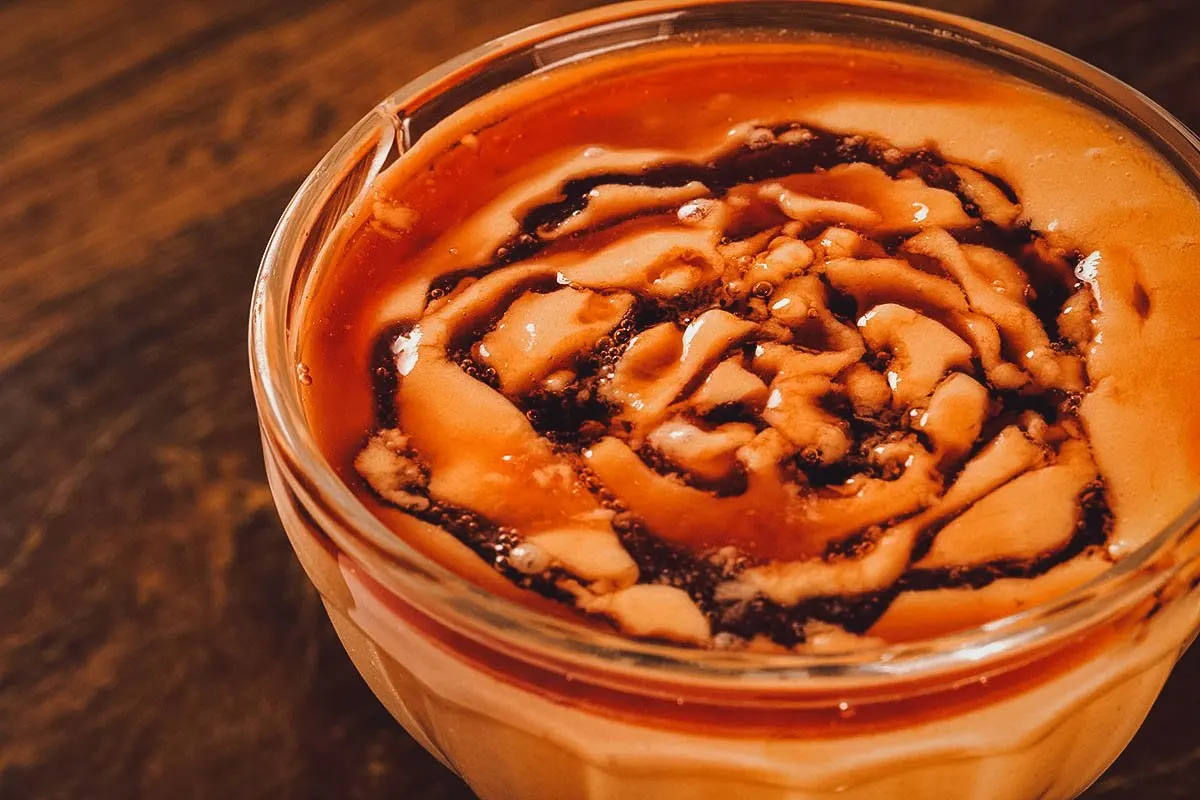
Photo by Paulovilela
9. Pamonha
Pamonha is one of the many Brazilian desserts traditionally associated with Festa Junina, an annual Brazilian celebration that commemorates St. Anthony, St. John the Baptist, and St. Peter. It’s celebrated from mid-June till around the end of July and marks the end of the rainy season and the beginning of the harvest.
During this time, a host of Brazilian sweets are made to celebrate the festival like curau, canjica, paçoca de amendoim, and this Brazilian version of tamales known as pamonha. Traditionally sold as street food in Brazil, it’s made with boiled and mashed sweet corn wrapped in corn husks.
Depending on what it’s made with, pamonha can be savory or sweet. Sweet versions are typically served plain or made with coconut milk mixed into the mashed corn.
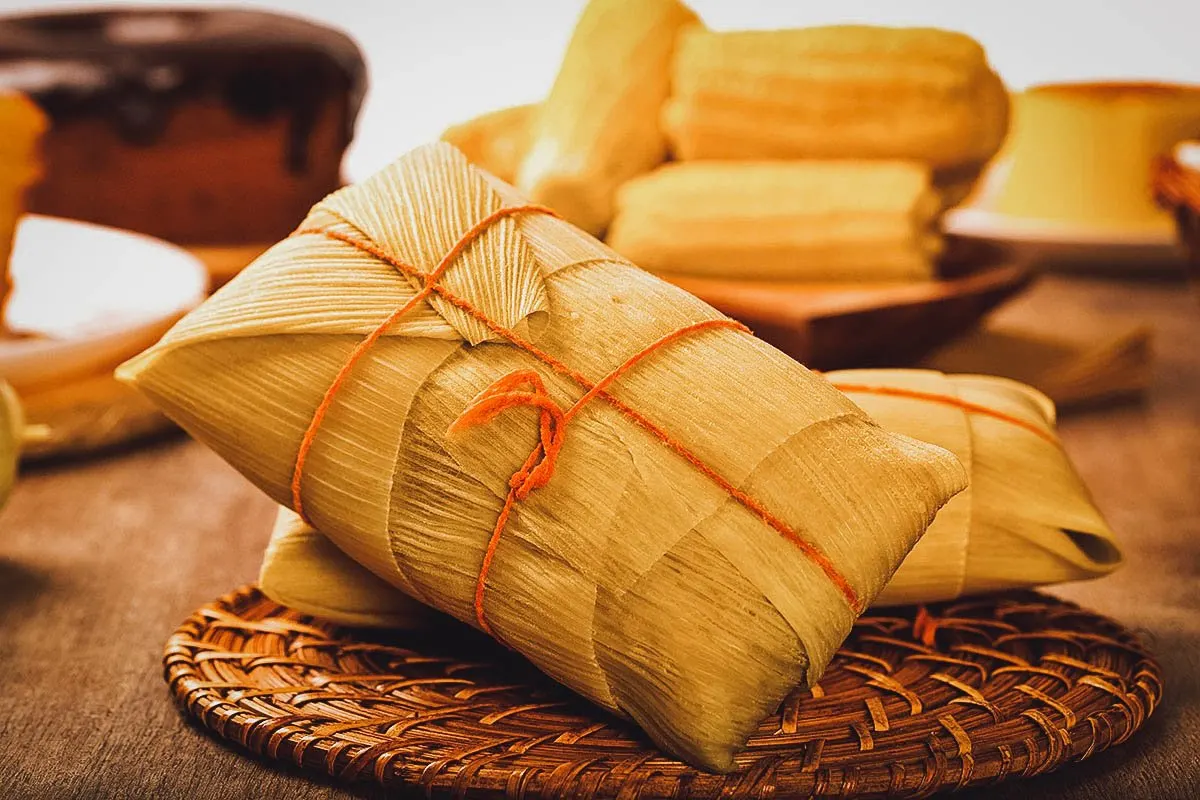
Photo by Paulovilela
10. Paçoca de Amendoim
Like pamonha, paçoca de amendoim is a dessert traditionally prepared for Festa Junina. It’s a Brazilian peanut candy made with ground peanuts, sugar, and salt. Its name literally means “to crumble” or “to smash” and is in reference to how these Brazilian sweet treats were traditionally made with a mortar and pestle.
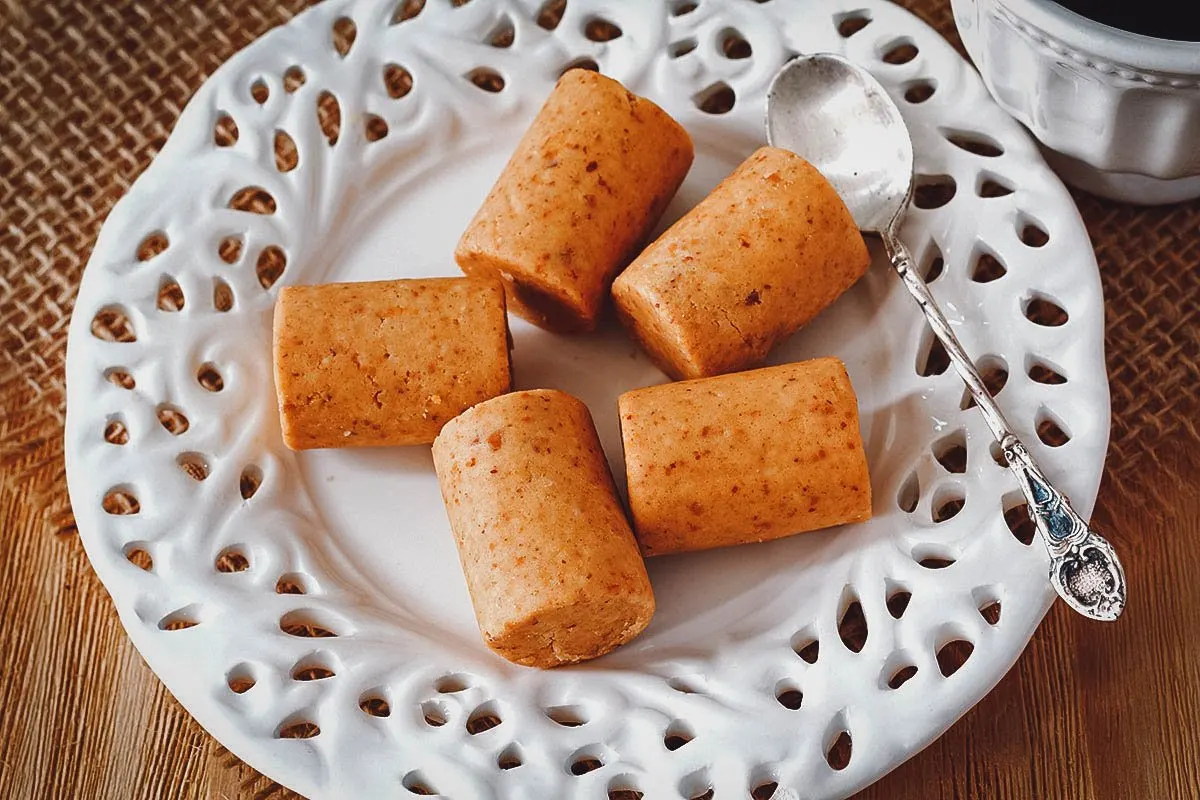
Photo by jantroyka
11. Pe de Moleque
Like cajuzinho and paçoca de amendoim, pe de moleque is one of the most well-known Brazilian desserts made with peanuts. It’s a type of Brazilian brittle candy made with peanuts and melted sugar (rapadura) or molasses.
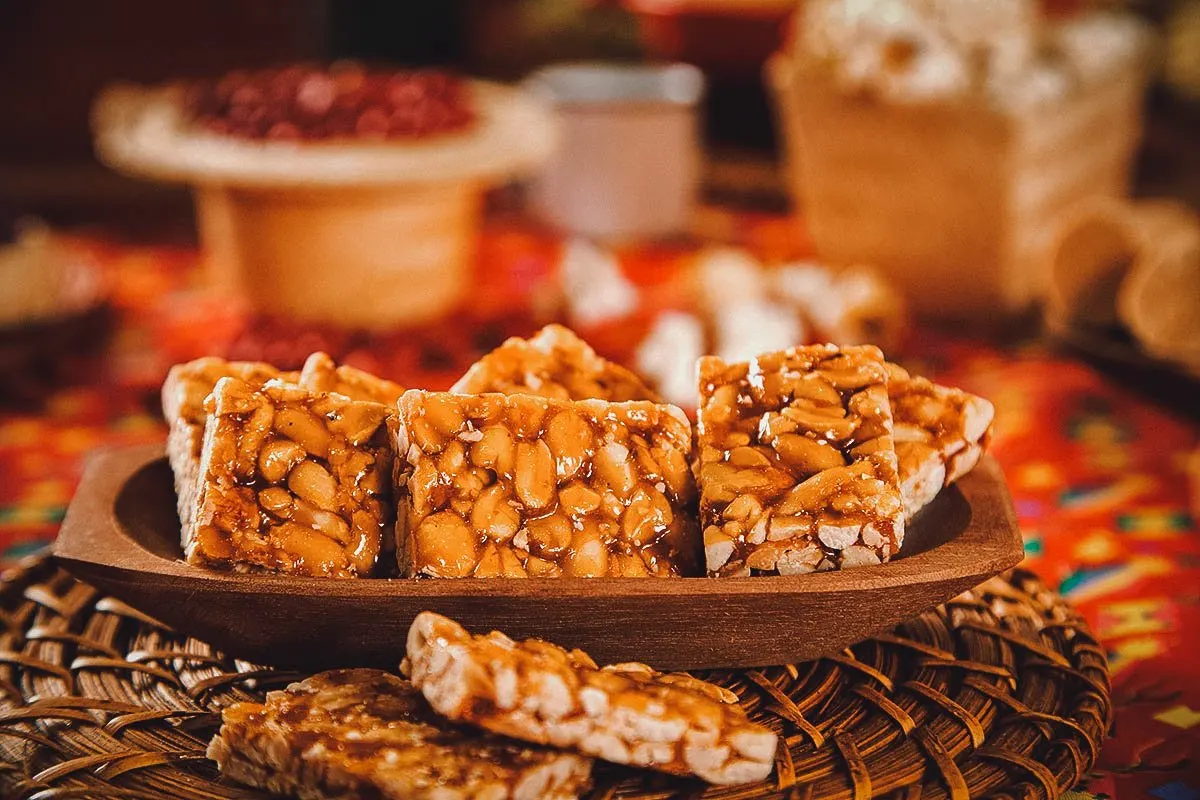
Photo by jantroyka
12. Cuscuz Branco
Cuscuz branco (or cuscuz de tapioca) is a Brazilian dessert made with North African couscous and shredded coconut. It’s popular in the northern and northeastern regions of Brazil – especially in Bahia – and in Rio de Janeiro where it’s often sold by street food and beachside vendors as a snack.
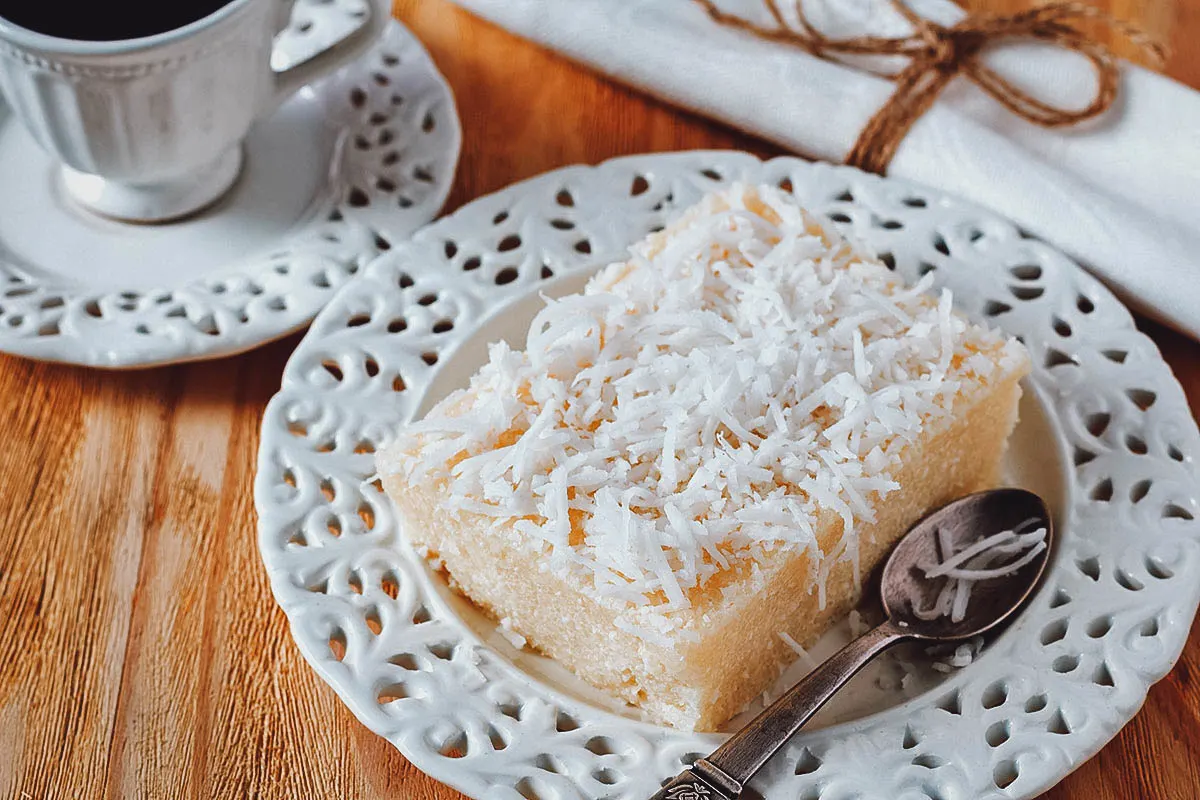
Photo by jantroyka
13. Cocada
Cocada refers to a traditional coconut candy made with freshly grated coconut, sugar, and sweetened condensed milk. It’s typical to northeastern Brazil though it’s also popular in many countries throughout Latin America like Argentina, Chile, Mexico, Panama, Colombia, Peru, and Ecuador.
Cocada can be made in three different ways in Brazil – cocada de corte (or cocada de leite condensado), cocada de forno, and cocada cremosa. Cocada de forno is a baked coconut dessert while cocada cremosa is a type of Brazilian coconut pudding.
Pictured below is cocada de corte or Brazilian coconut bars. Slightly chewy or crisp in texture, they’re commonly sold as street food in Brazil and can be made in different flavors. Common versions include cocada branca (white cocada) and cocada prieta (burnt cocada), as well as variations made with banana, guava, and other fruits.
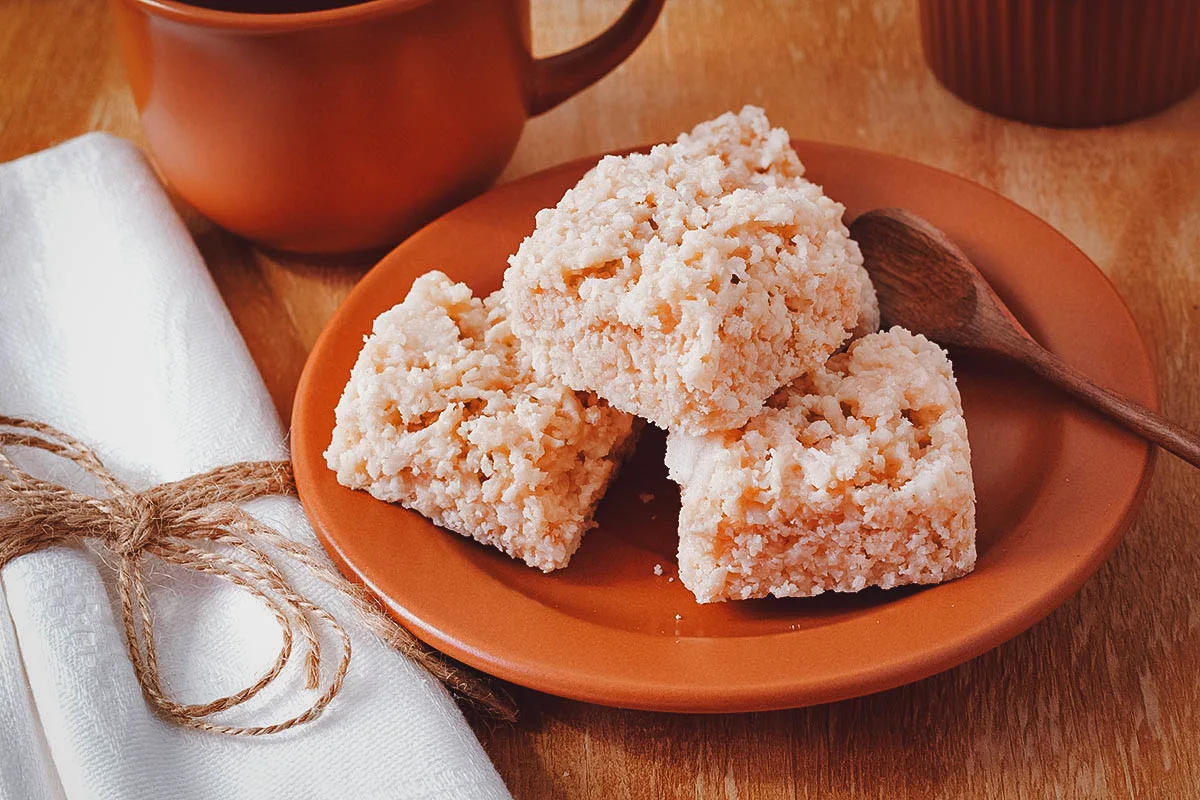
Photo by jantroyka
14. Bolo de Fubá
Brazil is no stranger to scrumptious cakes and bolo de fubá is one of its most popular. It refers to a light and delicate Brazilian cornmeal cake.
Depending on the recipe, this traditional Brazilian cake can be enriched with different ingredients like coconut or cheese. It’s commonly eaten for breakfast or as a snack, often with coffee.
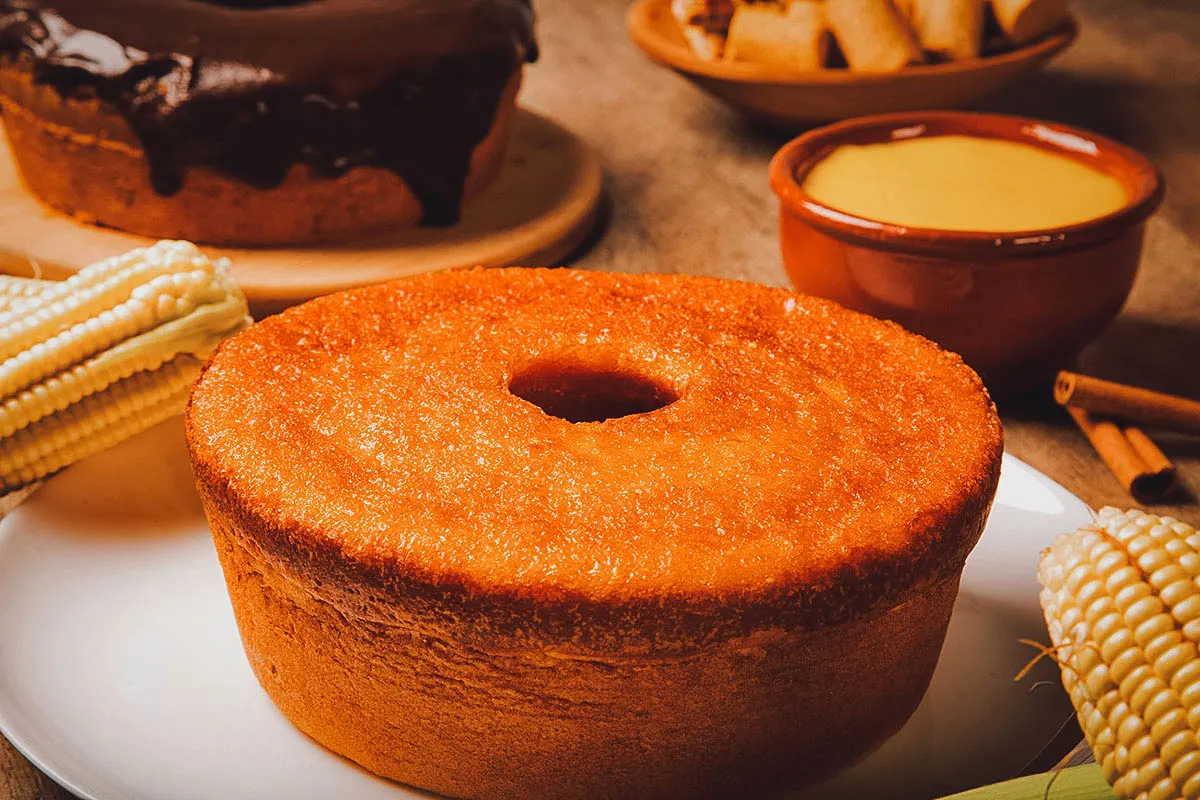
Photo by Paulovilela
15. Bolo de Rolo
Bolo de rolo is a popular Brazilian dessert made with a thin layer of cake rolled with guava jam. Originally from Pernambuco, it’s similar to a Swiss roll except it’s made with much thinner layers.
Bolo de rolo is an adaptation of a Portuguese almond sponge cake known as colchão de noiva. Almonds weren’t available in Brazil at the time so they used melted guava paste and sugar in lieu of the traditional colchão de noiva filling.
Over time, the cake’s layers became thinner and thinner with the most impressive rolls being made with sixteen or more layers. Bolo de rolo is traditionally made with guava jam but it can be filled with other ingredients as well like chocolate, hazelnut, or dulce de leche.
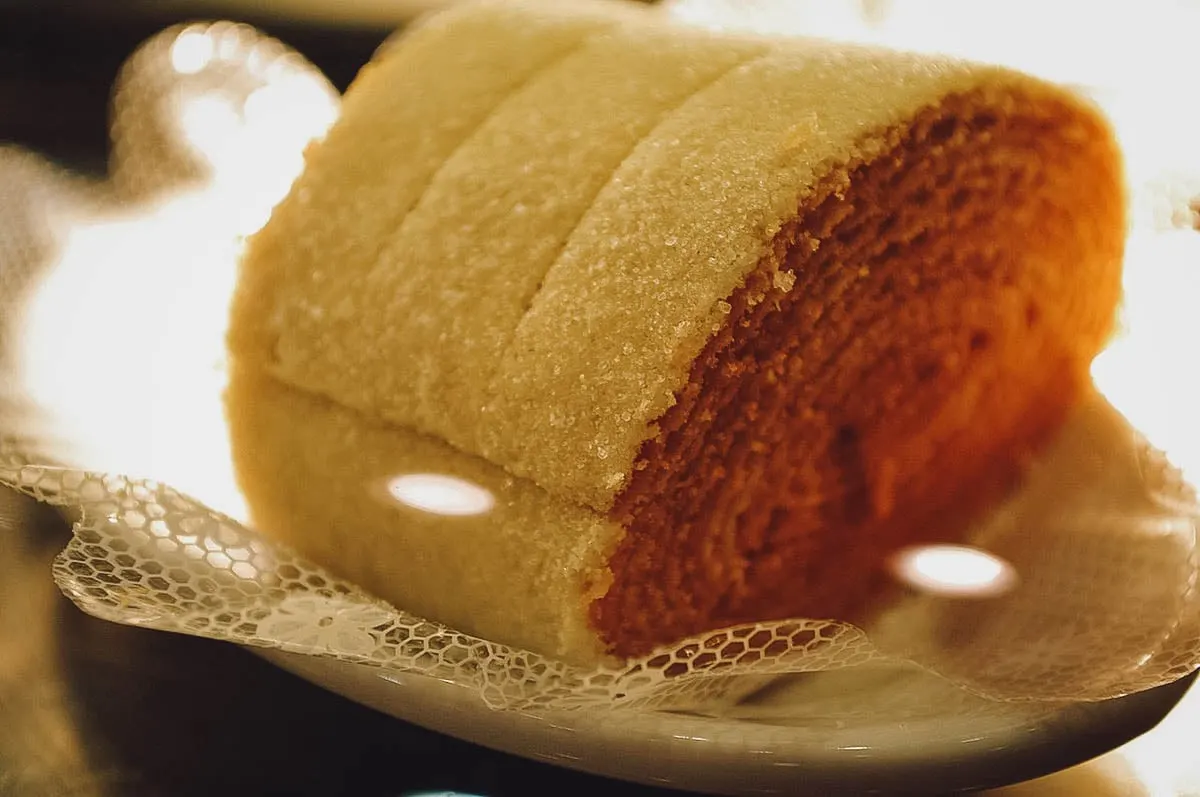
Photo by Guilherme Jófili, CC BY 2.0, via Wikimedia Commons / Processed in Photoshop and Lightroom
16. Bolo de Cenoura
Bolo de cenoura refers to Brazilian carrot cake. Carrot cake can be found in many countries around the world but in Brazil, it’s a little different.
Unlike American-style carrot cake, bolo de cenoura is made in bundt cake pans. It also replaces the cream cheese frosting with chocolate icing that resembles a pourable version of brigadeiros.
But the biggest difference is in how the carrots are incorporated into the cake. Unlike chunky and spiced American carrot made with grated carrots, the carrots in Brazilian carrot cake are blended till smooth. This gives the cake its signature yellow color and just a hint of carrot flavor.
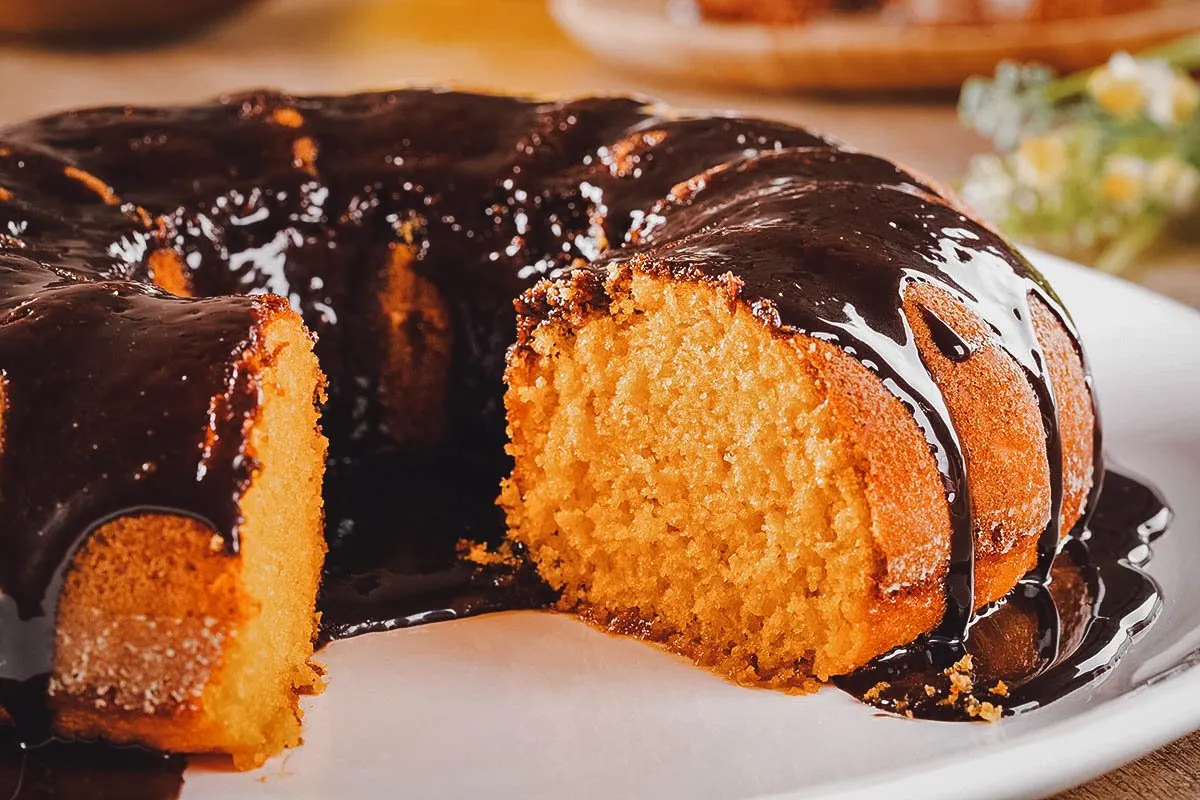
Photo by Paulovilela
17. Canjica
Like pamonha and paçoca de amendoim, canjica is a traditional Brazilian dessert associated with Festa Junina. It refers to a popular Brazilian porridge made with white corn, coconut, milk, cinnamon, cloves, and sugar.
Canjica is associated with Festa Junina but it can be enjoyed as a snack or dessert at any time of the year. It can be served warm or chilled and is often enriched with other ingredients like roasted peanuts, vanilla, nutmeg, and sweetened condensed milk.
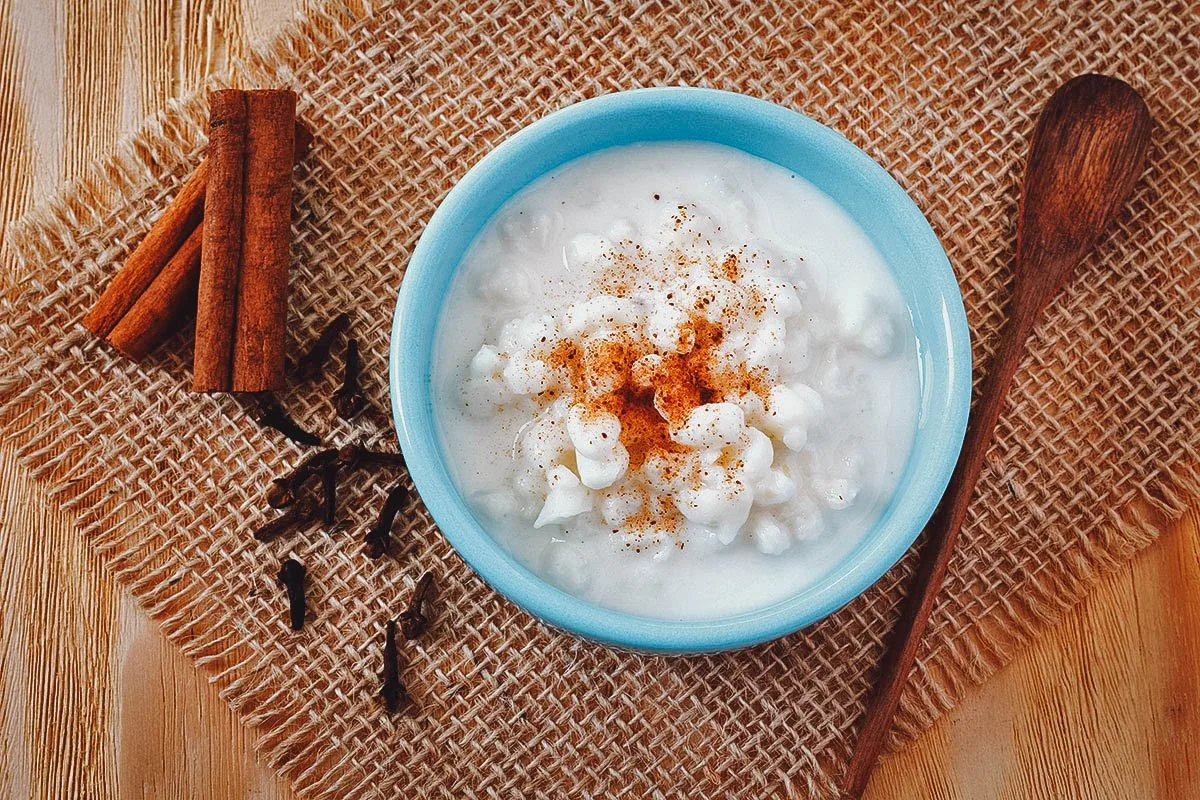
Photo by jantroyka
18. Curau de Milho
Curau de milho is another Brazilian dessert that’s often served at Festas Juninas. It refers to a sweet, custard-like dessert made from the pressed juice of unripe maize kernels cooked with milk and sugar. Like canjica, it can be eaten warm or cold and is usually dusted with powdered cinnamon sugar before serving.
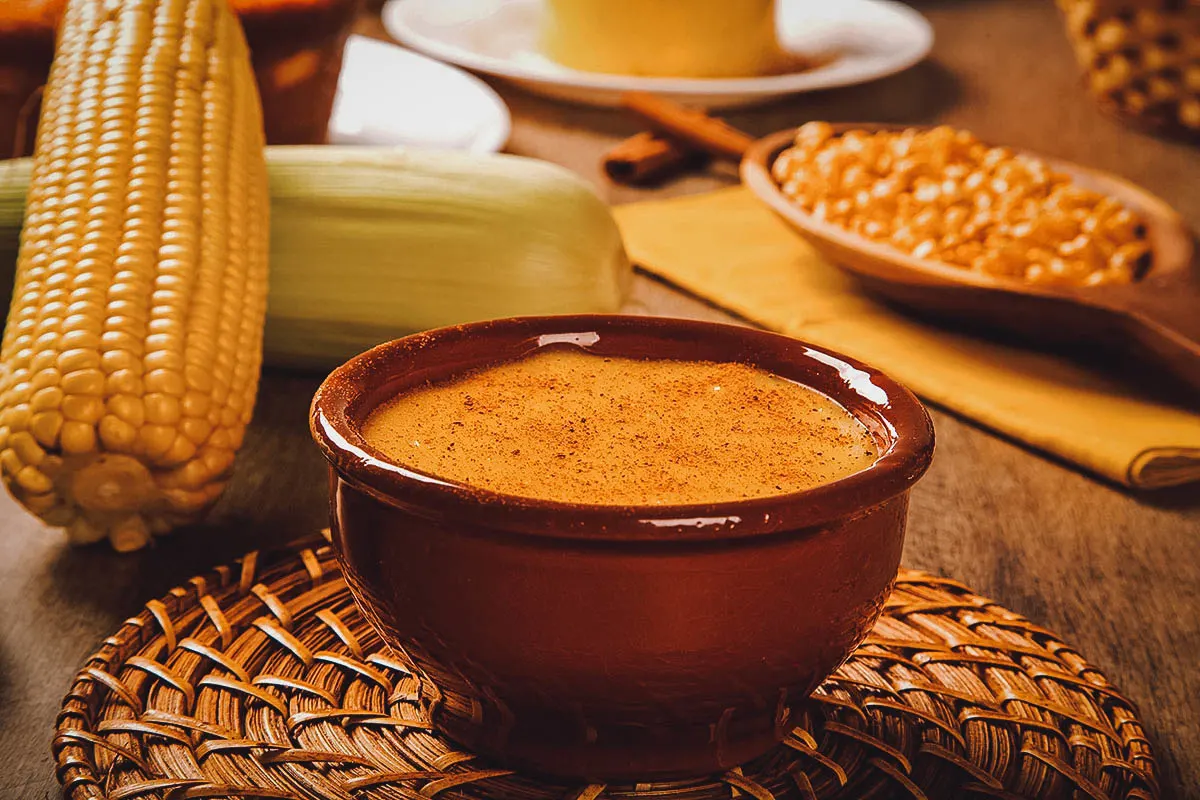
Photo by Paulovilela
19. Arroz Doce
Like many of these Brazilian desserts, arroz doce made its way to Brazil by way of Portugal. It refers to a Brazilian rice pudding made with short-grained arborio rice, milk, sugar, cinnamon, and lemon zest. It’s yet another Brazilian dessert traditionally associated with Festa Junina.
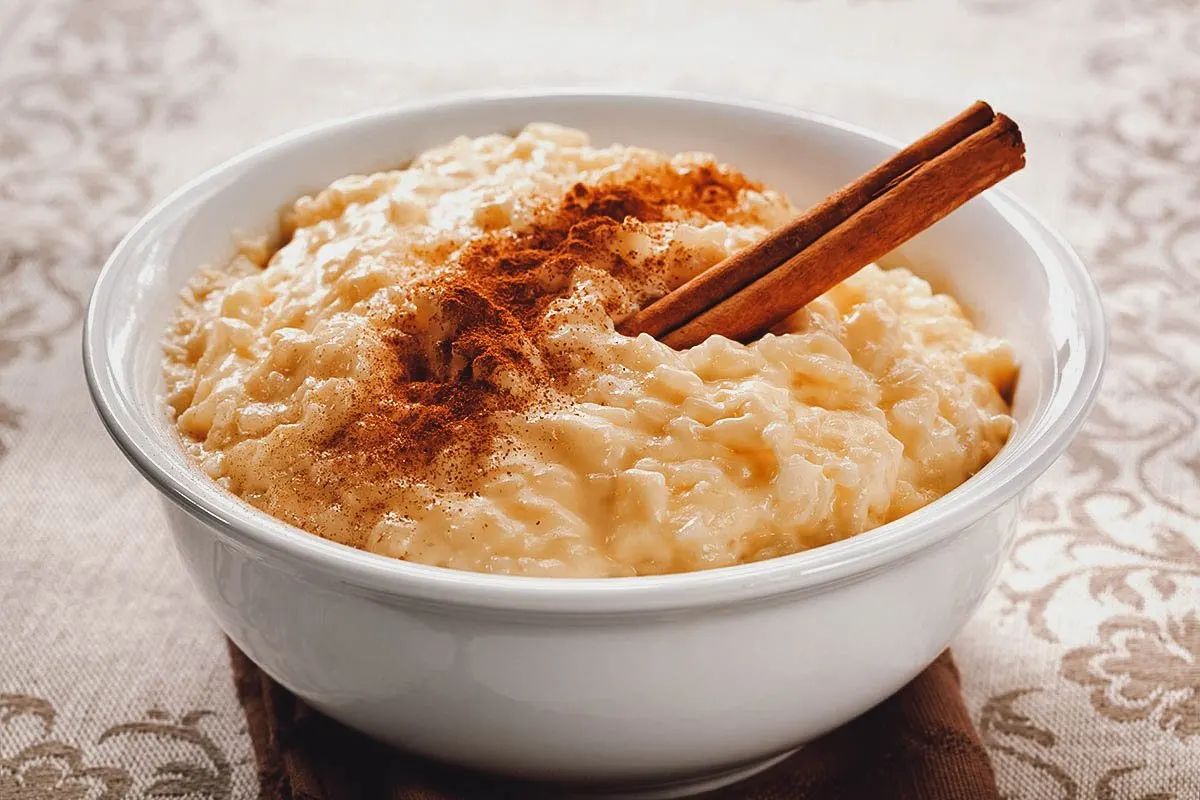
Photo by robynmac
20. Pudim de Leite Condensado
If you like flan, then you’re going to love pudim de leite condensado. It’s a simple dessert made with just four ingredients – eggs, whole milk, sweetened condensed milk, and sugar. Creamy and custard-y, it’s believed to be an adaptation of a traditional Portuguese dessert known as pudim abade de priscos.
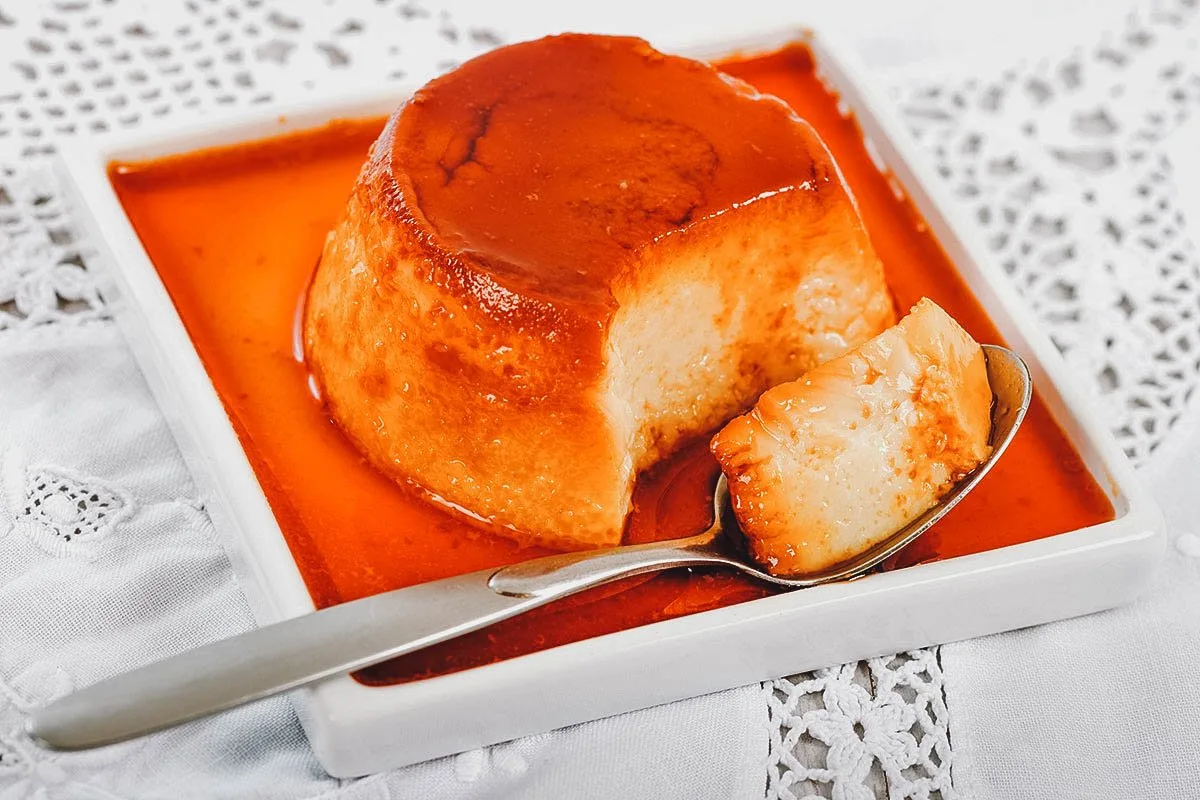
Photo by paulbrighton
21. Queijadinha
The queijadinha is a type of Brazilian custard tart derived from the Portuguese queijada pastry. You can think of it as a creamy and custard-y version of muffins flavored with coconut and cheese.
Queijadinhas exist in many variations throughout Brazil. There are probably as many recipes for queijadinha as there are Brazilian grandmothers, but the most traditional versions are typically made with grated coconut, cheese, sweetened condensed milk, egg yolks, butter, and sugar.
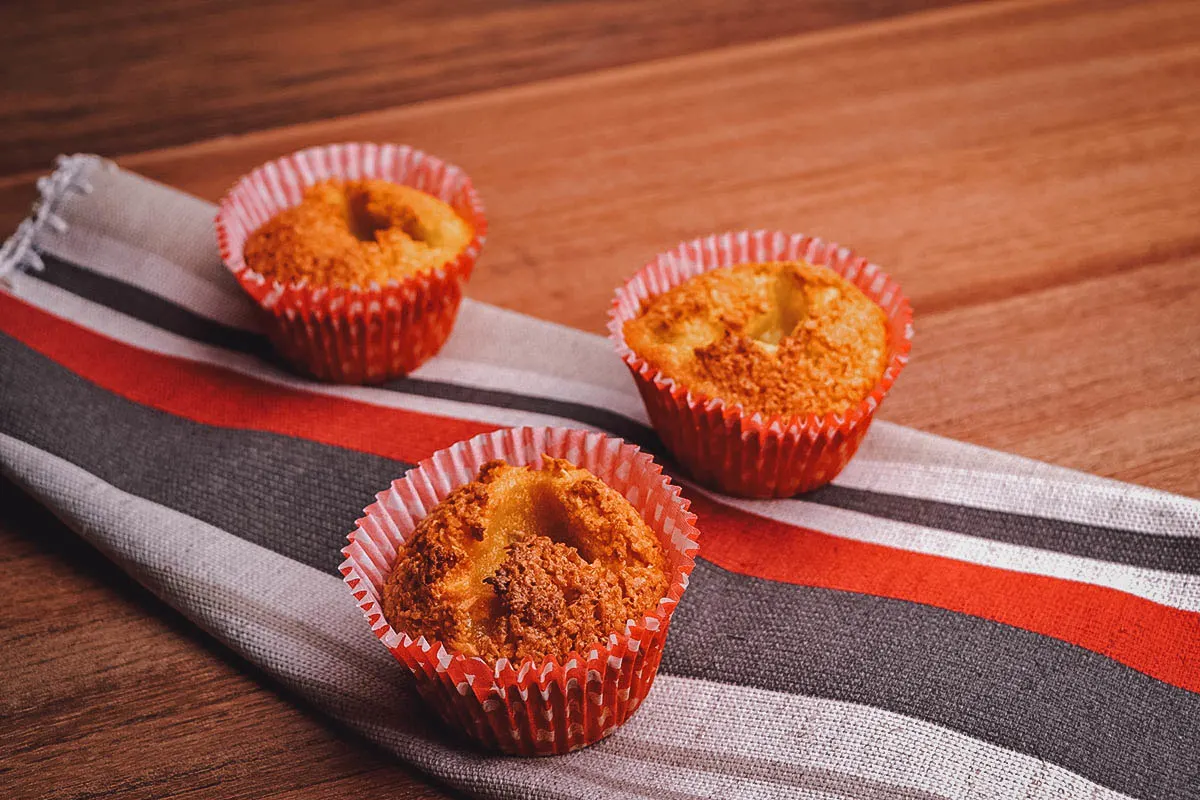
Photo by romualdocrissi
22. Quindim
Quindim is a famous Brazilian baked dessert made with egg yolks, ground coconut, sugar, and coconut milk. Baked in a bain-marie, it’s a type of coconut egg custard known for its glistening surface and intense yellow color.
Quindins can be baked individually in ramekins or in larger ring-shaped pans. When baked in these family-sized pans, the dessert becomes known as quindão.
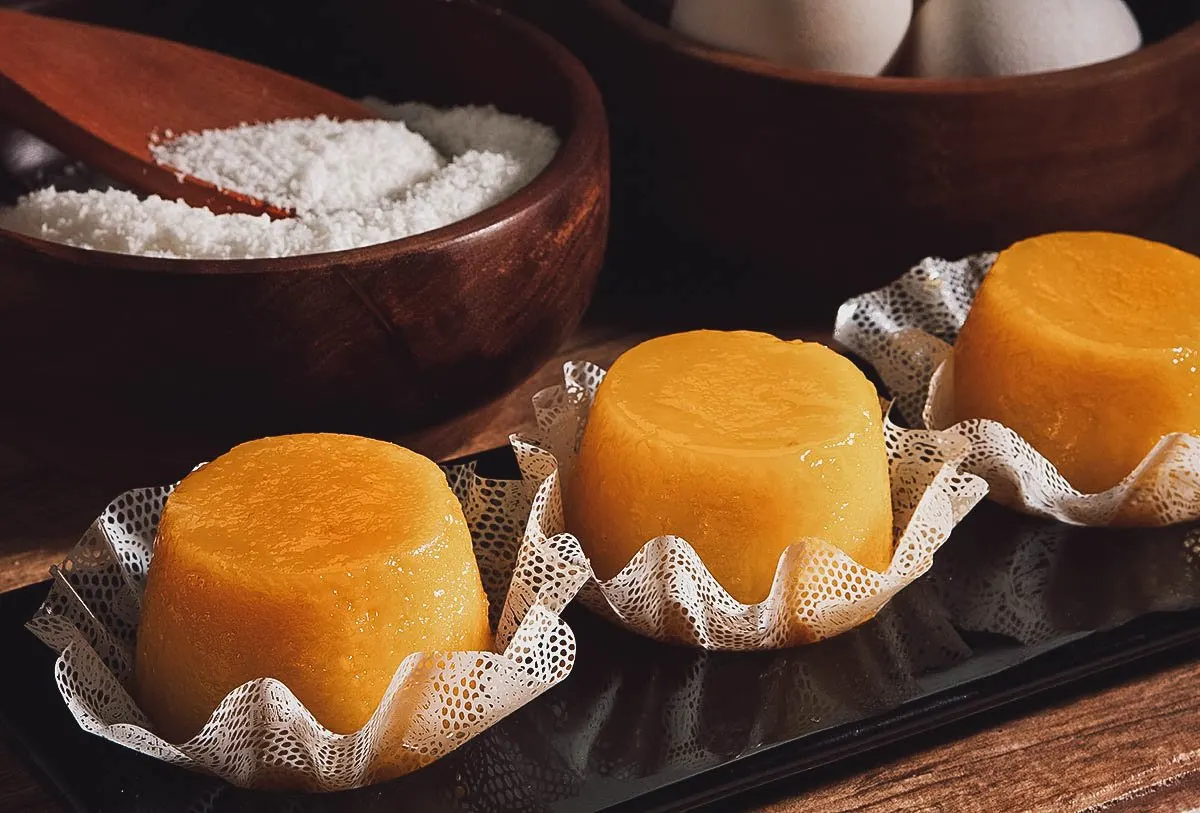
Photo by diogoppr
23. Romeu e Julieta
As you can probably tell from its name, this next Brazilian dessert is named after Shakespeare’s most famous play – Romeo and Juliet. Similar to Argentinian postre vigilante or Colombian bocadillo con queso, it’s a simple dessert consisting of a sliver of cheese and a slice of fruit paste.
It sounds easy enough to put together but romeu e julieta needs to be made with very specific ingredients to be considered authentic. True romeu e julieta consists of a soft and mildly salty cheese called queijo minas from Minas Gerais and a Brazilian guava paste known as goiabada. Put them together for a perfect pairing of salty and sweet.
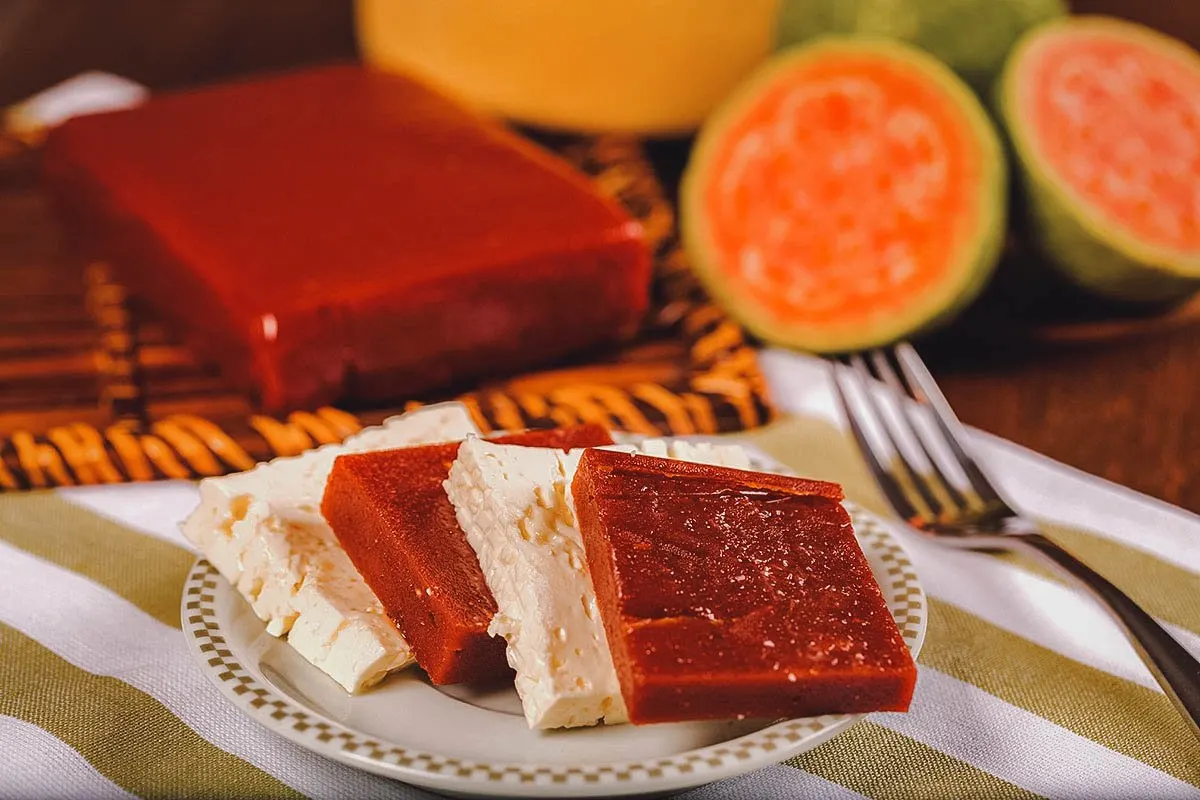
Photo by betochagas
24. Bem casado
Bem casado literally means “well married” and refers to a popular Brazilian cookie sandwich often served at weddings and bridal and baby showers. Made with dulce de leche sandwiched between two small sponge cake discs, you can think of it as the softer Brazilian version of alfajor.
Like brigadeiros and children’s parties, bem casados and weddings go hand in hand in Brazil.
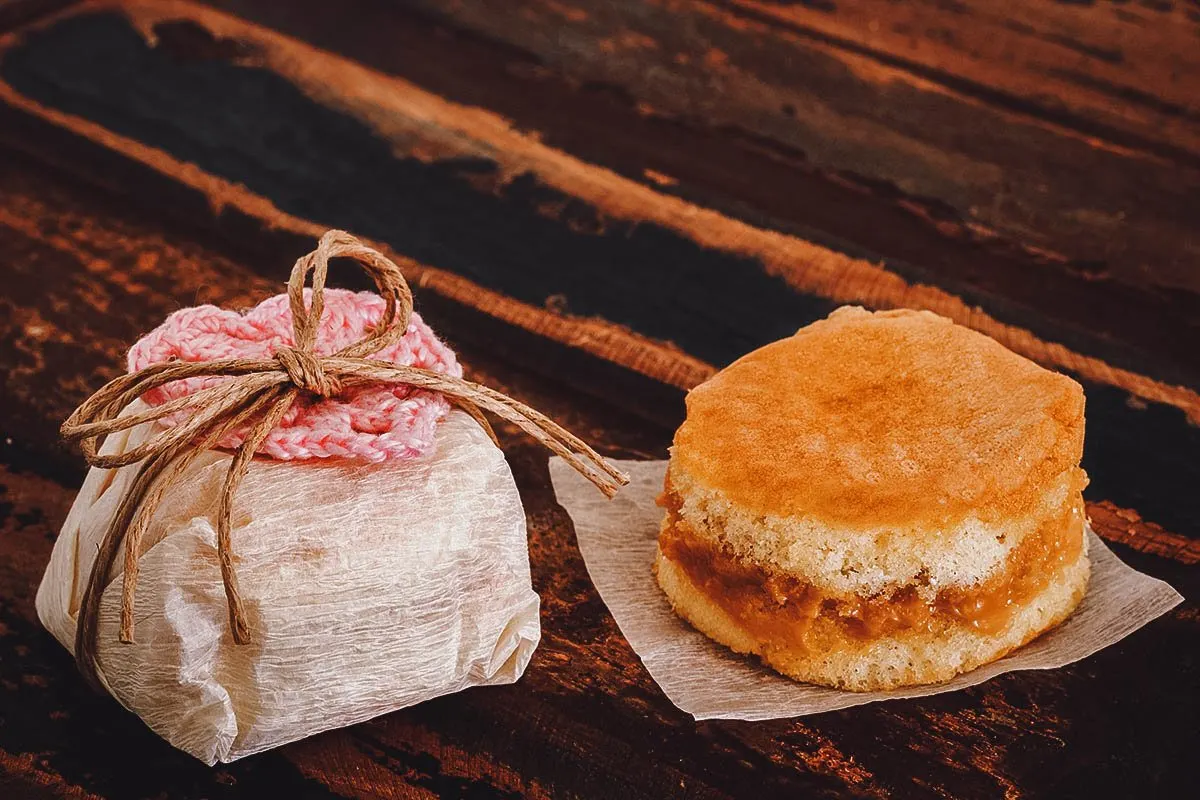
Photo by diogoppr
25. Fios de Ovos
Popular in Brazil and Portugal, fios de ovos or “egg threads”refers to a traditional Portuguese dessert made with egg yolk strands boiled in sugar syrup. It’s a popular and versatile ingredient that’s often used as a topping for vanilla ice cream and other Brazilian desserts like flan or chocolate cake.
Fios de ovos is a simple but time-consuming dish made by drawing egg yolks through a sieve and into a pot of boiling sugar syrup. It’s commonly paired with cakes and Brazilian sweets but it can also be enjoyed on its own with whipped cream. It can even be served as a side dish to Peru à Brasileira (Brazilian-style turkey) and other Brazilian ham and fish dishes.
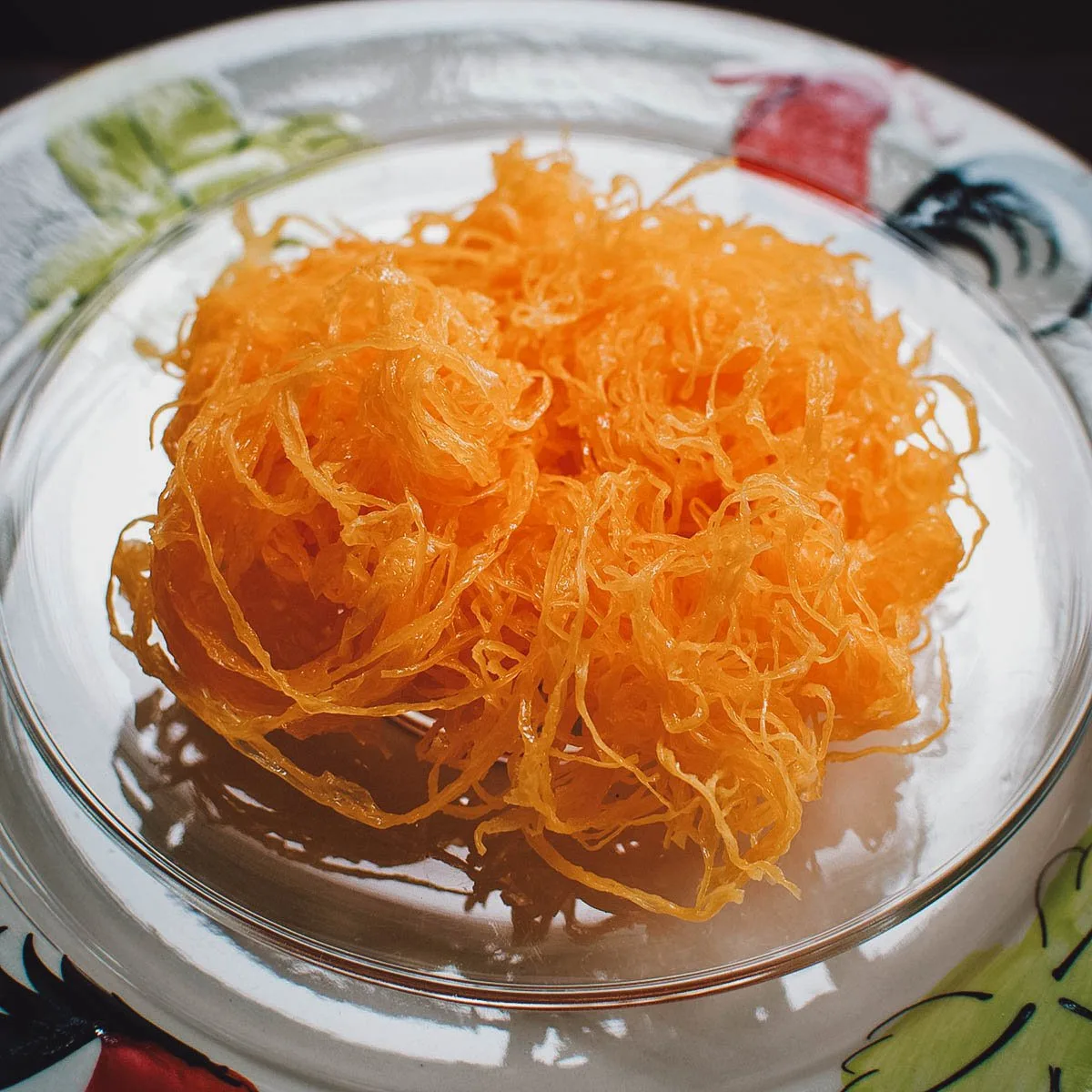
Photo by Takeaway, CC BY-SA 3.0, via Wikimedia Commons / Processed in Photoshop and Lightroom
FINAL THOUGHTS ON BRAZILIAN DESSERTS
This is by no means an exhaustive list but we do hope it whets your appetite for all the traditional Brazilian desserts you can expect to have in Rio de Janeiro, São Paolo, and other parts of Brazil. As big as this country is, I’m sure you’ll be discovering a LOT more. Bom Proveito!
Cover photo by diogoppr. Stock images via Depositphotos.


Camila
Tuesday 14th of February 2023
Seria bom se tivesse receitas de todos os doces
Thomaz
Sunday 15th of January 2023
Hello! Thanks for the article! I love those ones with no much sugar haha. Many of those desserts are known for be too sweet.
One thing: That pic of "Bolo de Rolo"(the one with a cup of cofee) is not a Bolo de Rolo. That's a "rocambole". Rocambole it's another rolled cake and it has few layers and another type of cake batter.
JB & Renée
Friday 20th of January 2023
Thank you so much Thomasz! I've gone ahead and updated the picture. Much appreciated. :)
Yuka
Saturday 24th of September 2022
Pão de mel is one of my favorites! The one with doce de leite in the middle.
JB & Renée
Sunday 2nd of October 2022
Thanks for sharing Yuka!
Juliana Mafra
Monday 15th of August 2022
Check out the Brazilian dessert Cartola :)
JB & Renée
Saturday 20th of August 2022
Thank you for the recommendation Juliana!
Paulistano
Sunday 26th of December 2021
São Paulo is spelled incorrectly in the article.
JB & Renée
Thursday 30th of December 2021
@Paulistano: Many thanks for the correction! I'll be sure to fix that on the next article update.